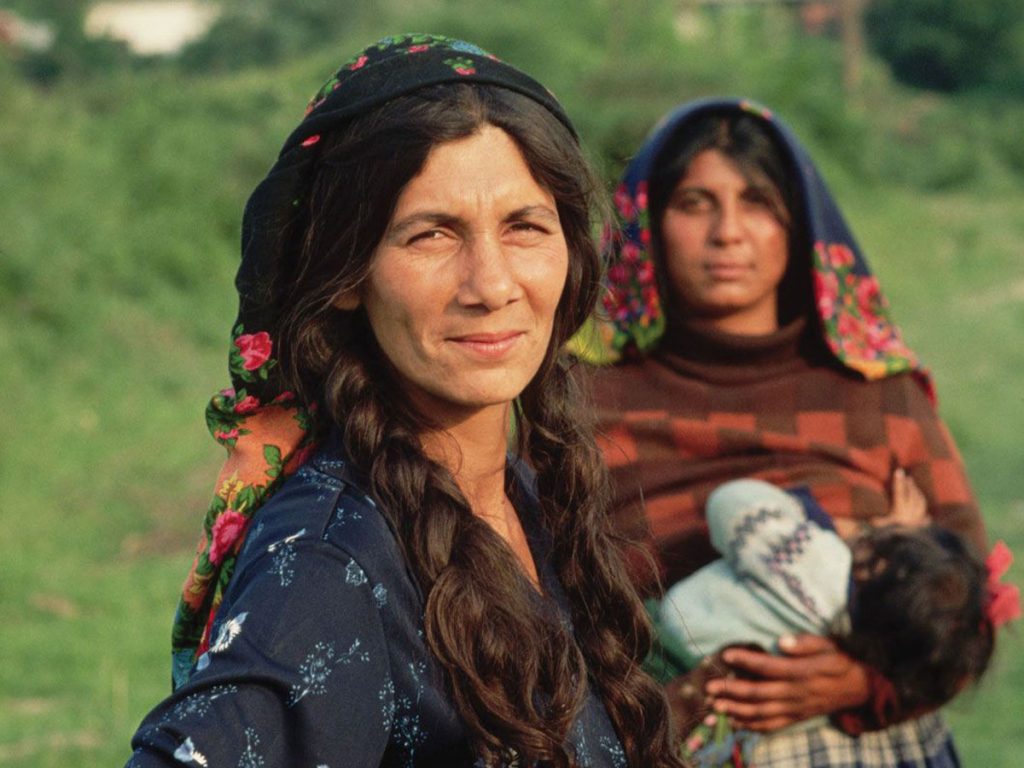Whilst traveling across Eastern Europe, especially the Balkans, you’re more than likely to come across Romani Gypsies. Often associated with criminality, curses and other stereotypes, the Roma people are heavily discriminated against. In many countries, such as Bulgaria, the Roma live in slums on the outskirts of the city, often ostracized by the general population and treated as second class citizens. However, the history of the Roma gypsies is as fascinating as it is depressing. From harboring baby Jesus to inventing the flamenco dance of Spain, read on to break the stereotypes and discover the real history of the Romani people.
Where do Romani Gypsies come from?
 Roma gypsies originated in Northern India around 1,500 years ago, precisely from Rajasthan, Haryana, and Punjab regions. Their ethnicity can be classed as Indo-Aryan and its believed that they arrived in Europe around 1,000 years ago. During the International Roma Conference in 2016, the Minister of External Affairs in India stated that the people of the Roma community were part of the Indian nation and recommended that the Indian government recognizes the Roma community spread across over thirty countries as a legitimate part of the Indian diaspora.
Roma gypsies originated in Northern India around 1,500 years ago, precisely from Rajasthan, Haryana, and Punjab regions. Their ethnicity can be classed as Indo-Aryan and its believed that they arrived in Europe around 1,000 years ago. During the International Roma Conference in 2016, the Minister of External Affairs in India stated that the people of the Roma community were part of the Indian nation and recommended that the Indian government recognizes the Roma community spread across over thirty countries as a legitimate part of the Indian diaspora.
Through the ages, Gypsies in Europe survived by various trades from flower selling and goldsmithing to metal and woodworking. In modern-day Europe, there are estimated to be over 10 million gypsies. However, this cannot be confirmed as it’s common for Romanis to choose not to register their ethnic identity in official censuses due to an ingrained history of discrimination and persecution. Many gypsies are also descendants of intermarriage with dominant populations and no longer identify only as Romani.
The 19th Century saw a large Romani migration to the American continents. In North America, Canada and the USA has over 1 million Roma. In South America, countries like Brazil have around 800,000 Roma who mostly descended from Gypsies who were deported by the Portuguese Empire during the Portuguese Inquisition
What does Gypsy Mean?
Amongst English speakers, the Roma are often referred to as Gypsies. The word Gypsy comes from the English word of Gyptian, short for Egyptian which means Egyptian in Latin. This is due to the widely held belief during the middle ages that the Roma originated from Egypt, not India, and there was a highly regarded fable during the time that the gypsies were exiled from Egypt as punishment for harboring baby Jesus.
Aside from Gypsy, many countries have their own words to describe Romani people. In most countries of Eastern Europe, locals refer to Gypsies using the universal word ‘’Tzigane’’, this derives from Ancient Greek word for ‘untouchable’ and is considered a highly offensive slur.
Roma Language:
It’s estimated that there are over 2 million speakers of pure Romani language around the world. It’s a language separated into many dialects. However, due to the Nomadic nature of Gypsies and constant persecution, many Romani are native speakers of the dominant language of the country they reside in. For example, Bulgarian, Serbian, Russian or English are widely spoken by many Gypsies but it’s not uncommon for them to mix dominant languages with a dialect of Romani. This is known as Para-Romani and is almost impossible to understand for people outside of Gypsy culture.
History of Romani Persecution:
 The history of the Romani people is unfortunately dotted with horrific persecution. Their Nomadic lifestyle and refusal to assimilate into the status quo made them pariahs for various empires and countries. The year of 1385 was the first recorded sale of a Romani slave. Despite things looking up in the 1400s as they were issued safe conduct by Holy Roman Emperor Sigismund. Romanies were expelled from multiple regions of Germany, Italy, France, Sweden, Catalonia, England and Denmark in the 15th and 16th Centuries. Those orders soon followed death warrants for any Gypsies found in many of the countries. Portugal began deportations of Roma to its colonies in 1538.
The history of the Romani people is unfortunately dotted with horrific persecution. Their Nomadic lifestyle and refusal to assimilate into the status quo made them pariahs for various empires and countries. The year of 1385 was the first recorded sale of a Romani slave. Despite things looking up in the 1400s as they were issued safe conduct by Holy Roman Emperor Sigismund. Romanies were expelled from multiple regions of Germany, Italy, France, Sweden, Catalonia, England and Denmark in the 15th and 16th Centuries. Those orders soon followed death warrants for any Gypsies found in many of the countries. Portugal began deportations of Roma to its colonies in 1538.
At the outbreak of the Franco-Dutch War in the late 17th Century, France and Holland were in dire need of thousands of fighting men and as a result, many Roma were rounded up and drafted to fight. Their participation won them no friends following the end of the war as they once again became social pariahs and were butchered with impunity during the horrific ethnic cleansing campaign known as ‘Heathen Hunt’ in Holland.
Keeping Roma as slaves in Wallachia and Moldavia was only abolished in 1856 after this many Roma resumed their natural Nomadic lifestyle. In other parts of Europe, the Romani were subject to ethnic cleansing, seizure of children, and forced labor. A French tradition was to brand Gypsies before shaving their heads. In Bohemia, it was common to cut off the ears of Roma women to mark them. This appalling treatment led to an exodus of Roma to move East towards a more tolerant Poland and the Russian Empire who promised fair treatment in exchange for taxes.
In WW2, after the passing of the Nuremberg laws in 1935, Nazi forces incorporated the Romani population into the ‘’Untermenschen’’ category and initiated systematic deportation, forced labor, and mass murder. The dreaded death squads of the Einsatzgruppen are believed to have carried out up to 500,000 murders of Romani people mostly on the Eastern Front. In Nazi satellite states such as Croatia, the infamous Ustasa almost wiped out their entire Roma population in a series of Concentration camps where levels of cruelty and barbarism are believed to have shocked Nazi officials.
Following WW2, it seemed that many lessons had not been learned as countries such as Czechoslovakia labeled Gypsies as “socially degraded stratum” and enforced state-led sterilization programs. Post-war years saw similar sterilization programs in Germany, Norway, Sweden, and Switzerland.
In modern Europe, the situation for Roma is still dire. In Kosovo, the Roma are featured as a star on the flag of the young country but are still brutally persecuted by the ethnic Albanian population. In Italy, anti-Roma sentiment is reaching alarming levels and hostility between Italians and Romani is high. After a Romani criminal raped and killed an Italian woman in Rome, the entire Romani population was declared a National Security Risk by the Italian Government and Roma homes and camps came under attack. In the same year, 2 Roma children drowned on a packed beach and their lifeless bodies lay on the sand for hours surrounded by unphased beachgoers.
Romani Family System:
Romani families are close-knit and extended family is highly valued. It’s common for men and women to marry young and it’s vital that unmarried women are virgins. Romani society is very patriarchal, with the oldest man being the top of the household and men having more authority than women. after marriage, the woman joins the husband’s family and assumes the role of caring for the family. As women grow older, they gain respect and authority.
Romani Music:
Music is a natural and sacred part of the Romani culture. The style and performance practices of Romani musicians have influenced European classical composers such as Franz Liszt and Johannes Brahms. The distinctive sound of Romani music has also strongly influenced bolero and Jazz. It’s also believed that the Dances of the flamenco in Spain and Oriental dances of Egypt originated from the Romani people.
For private tours and media trips focusing on Eastern European gypsy culture, contact us for an affordable quote today!

